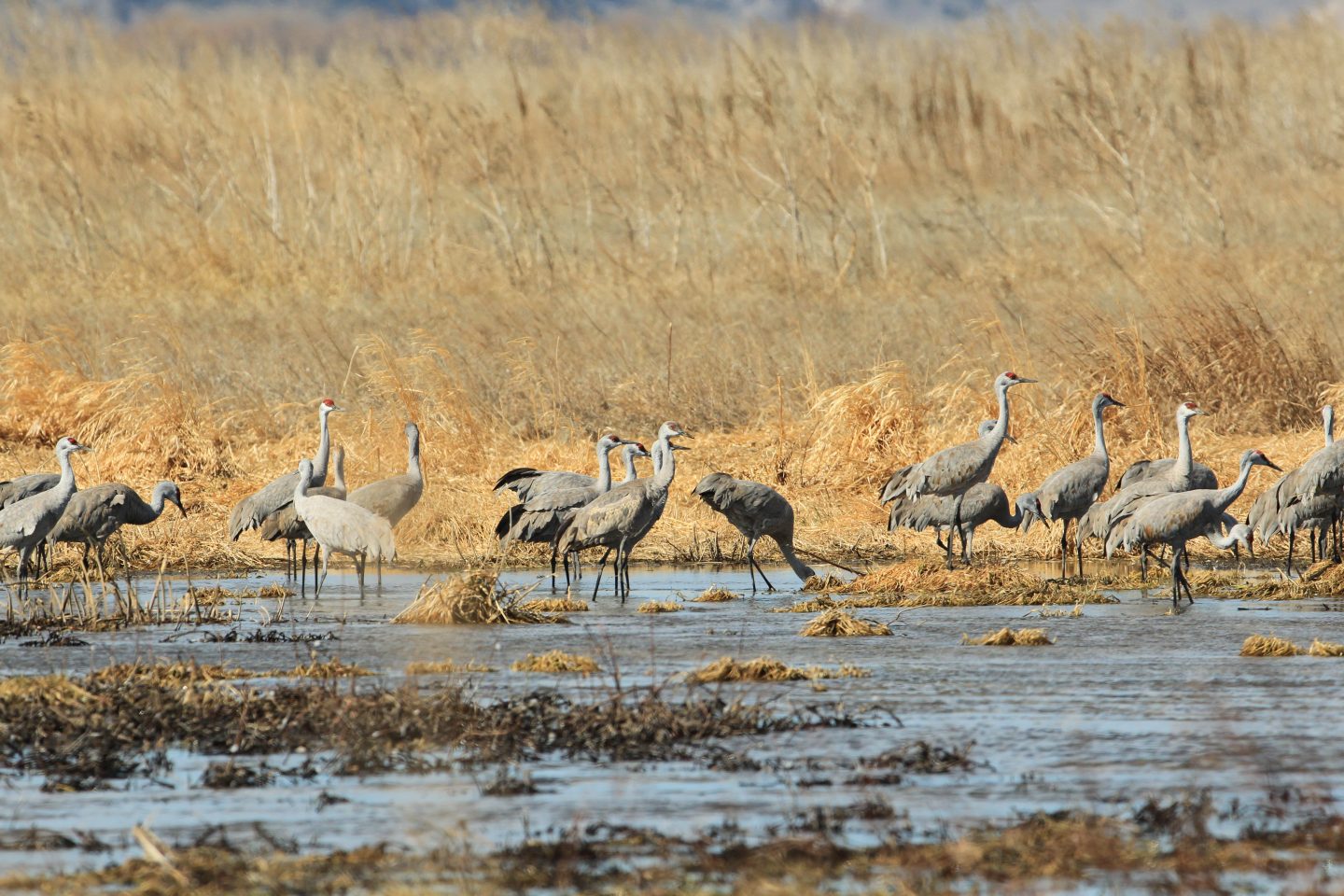
By Julie Geiser
The spring migration has begun when the unique and primeval call of the sandhill crane is heard; it is one that captures our attention and curiosity.
Standing four-foot tall these prehistoric birds travel through Nebraska as part of their migration from summering areas in Texas, New Mexico and Mexico to their nesting areas in the upper United States, Canada and as far North as Siberia.
In the Central Flyway, Nebraska is one of the few places left for the 500,000-plus cranes that will visit the Platte River Valley to replenish themselves. During their stay these great birds will consume large amounts of food providing energy for the long journey to their breeding grounds.
Cranes roost in the shallow Platte River channels for protection at night. Roosting areas are limited as the flow of the Platte River has diminished. Where there once were wide spans of sandbars surrounded by shallow water and flooded wetlands now there is growth and vegetation in many parts of the river. Cranes will utilize the meadow areas adjacent to the Platte River for roosting at night when no sandbars are available. River restoration projects are making headway in controlling vegetation in the Platte River.
Putting on an average of a pound during their stay on the Platte River, the cranes will consume waste grain and eat an extensive diet ranging from insects, amphibians, earthworms, grass shoots, grain, tubers, berries and lichens from wet meadows, which provides critical nutrients needed for breeding and egg-laying.
The bill of a crane is a very powerful and versatile tool used to dig and probe the ground for food. It is also used to stab mice and other animals for a meal with uncanny accuracy and when needed it is used to stab larger morsels into easy to swallow, bite size pieces.
Cranes use their long legs and necks to perform graceful dances that are an important part of their social function. Dancing cranes bow to each other, bounce into the air, hop around, flap their wings, throw their heads back, toss sticks about, stand on one foot along with other fancy moves. This display is one of the most remarkable sights in the animal kingdom. Dancing is done throughout the year and is not limited to mated pairs. Juvenile and unmated cranes will dance, as do groups of several sandhills. Colts (newly hatched cranes) will also dance when only days old.
Sandhill cranes have strong family bonds. They mate for life and their young stay with their parents an entire year learning the important migration routes and important survival skills. The young from the previous year will be chased off once the breeding grounds are reached. By doing this the birds are ensured a mixing of genetics, which is crucial to the survival of the cranes.
Bird watchers come from all over the world to observe cranes in Nebraska from mid-February through April. It is truly a sight to see cranes in huge masses, to learn their behaviors and view their displays. Read my article in the March edition of Nebraskaland Magazine – Nebraska’s Cranes and Your Guide to their Migration.
Places to view cranes:
Buffalo Bill State Recreation Area near North Platte
Information: 305-535-8035 or visit OutdoorNebraska.gov
Crane Trust Nature and Visitor’s Center near Alda
Information: www.cranetrust.org or call (308) 382-1820
Iain Nicolson Audubon Center at Rowe Sanctuary near Gibbon
Information: www.rowe.audubon.org or call (308) 468-5282
Fort Kearny State Historical Park and State Recreation Area,
Nebraska Game & Parks Commission near Kearney
Information: (308) 865-5305 or OutdoorNebraska.gov
